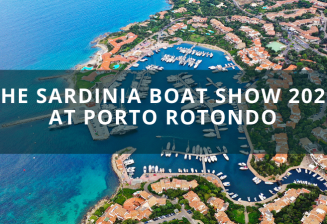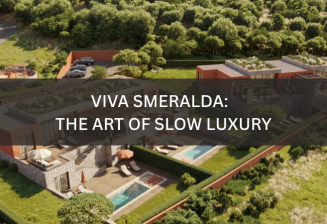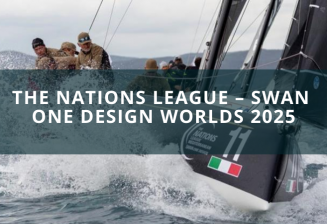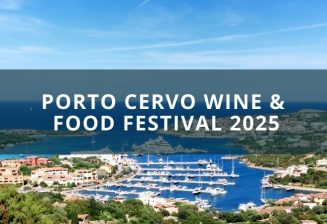Costa Smeralda Step by Steps
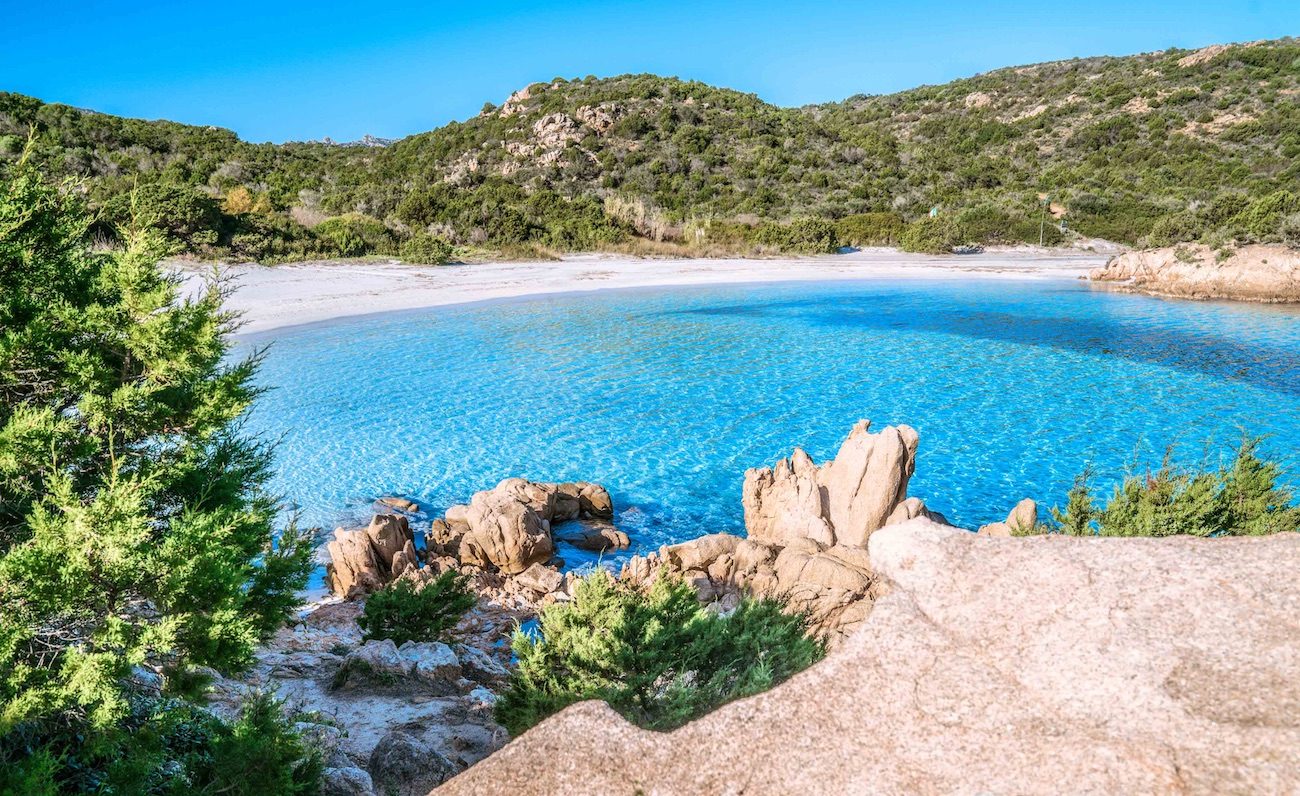
Costa Smeralda, beloved by the international jet-set, but also strongly dedicated to sustainability and respect for a unique and heavenly territory, covers 3114 hectares of which only 3.7% are built. During the 1960s, Karim Aga Khan IV, Ismaelite prince, enchanted by the beauty of this stretch of coast, had a brilliant epiphany that led him to invest in a tourist and urban development plan for the area.
Thus, was born the Italian paradise of international elite tourism, on about 55 km of coastline, between Rena Bianca and Poltu Quatu, which we will retrace step by step in this article.
The emerald real estate market is very varied and characterized by small “sub-markets” differentiated from each other on the prestige of the area, proximity to the sea, confidentiality of the area and services offered.
Let us start our step by step journey starting from the southern border (arriving from Olbia), Rena Bianca, up to the north one (Poltu Quatu).
Rena Bianca (Olbia)
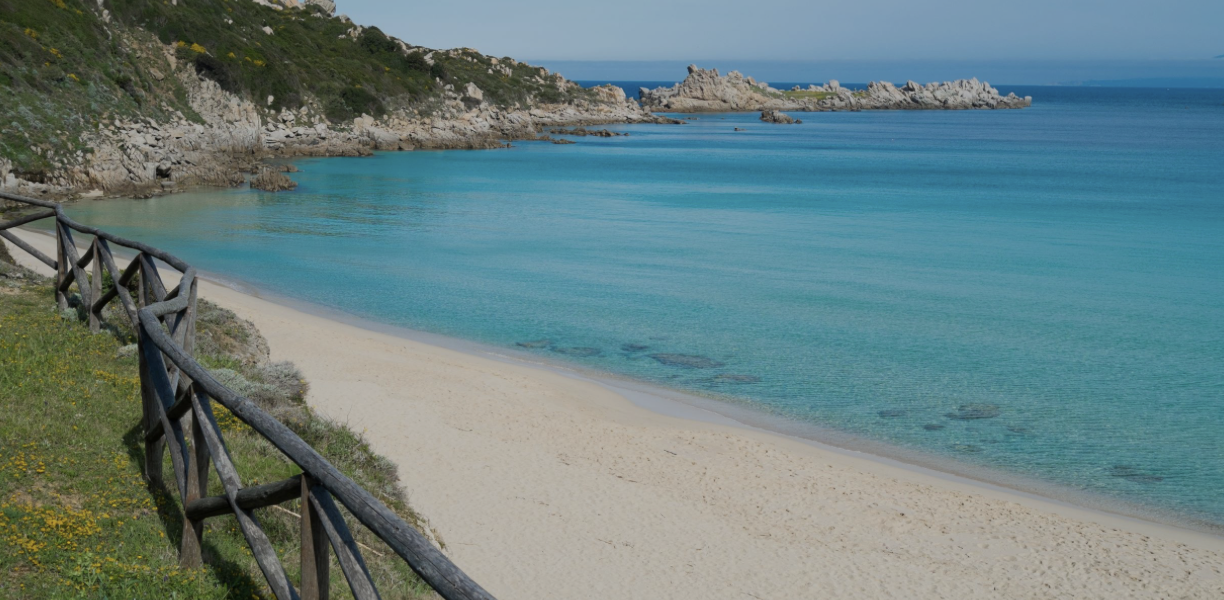
It is the beach that delimits the southern smerald border. Rena Bianca owes its name to the splendid fine white sand that distinguishes it.
It is considered one of the most beautiful beaches in Gallura, a real postcard setting.
A crystalline sea with emerald and turquoise shades that touches an immaculate sandy expanse, protected by small cliffs at the sides and framed by a thick Mediterranean scrub that gives the unmistakable scents of helichrysum, juniper and myrtle.
On the horizon it is possible to admire the suggestive islands of Soffi and Mortorio.
The seabed is shallow and sandy, perfect for families and the elderly.
Beach organized for:
- Families
- People with disabilities
- Elderly
- Young people
- Underwater activities lovers and windsurf
- Rental of umbrellas, deck chairs, pedal boats, kayak, and boats
Razza di Juncu (Olbia)
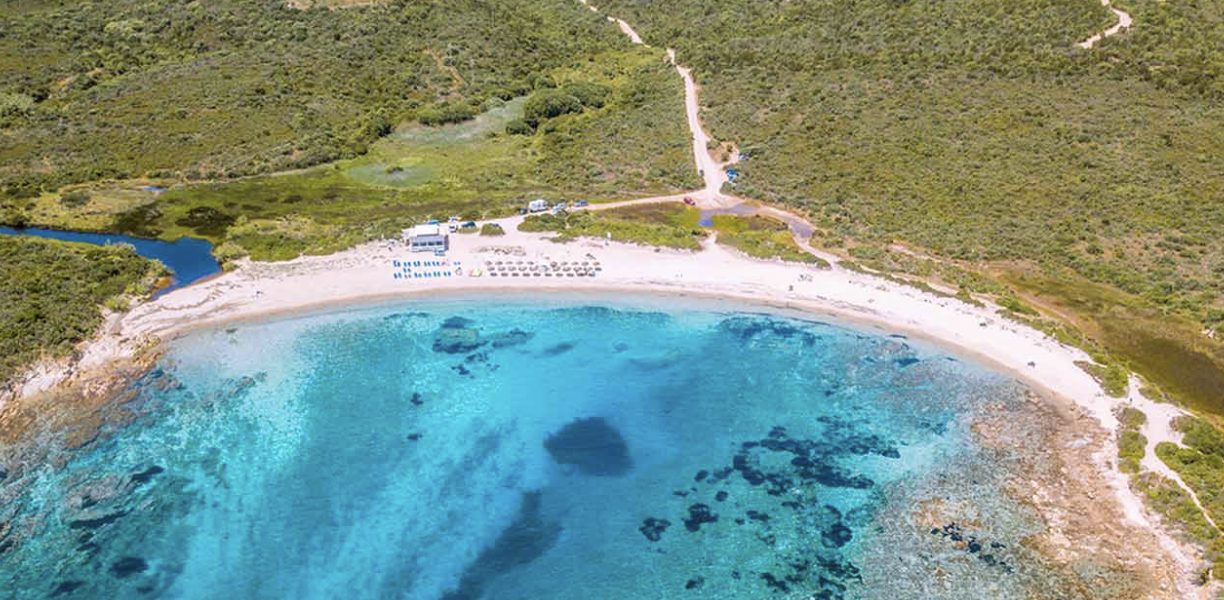
The second beach not to be missed, that we find entering the Costa Smeralda is Razza di Juncu, which takes its name from the reeds that open behind it.
Razza di Juncu looks like a strip of golden sand flanked on one side by a clear sea with rich and highly populated seafloor (perfect for snorkelling), and on the other side by thick and typical vegetation.
Nominated by Legambiente as one of the most beautiful beaches in Italy, attesting it with “4/5 sails”, Razza di Juncu is characterized not only by its beauty but also for being one of the dog friendly beaches of Costa Smeralda.
Here the furry friends are free to walk on the beach or among the Mediterranean scrub and swim in the company of their owners.
The seabed is shallow and sandy, ideal for relaxing with the family in complete safety.
Beach organized for:
- Families
- People with disabilities
- Elderly
- Young people
- AUnderwater activities lovers and windsurf (school and rental)
- Rental of umbrellas, deck chairs, pedal boats, kayak, and boats
Pedra Ruja – Liscia Ruja
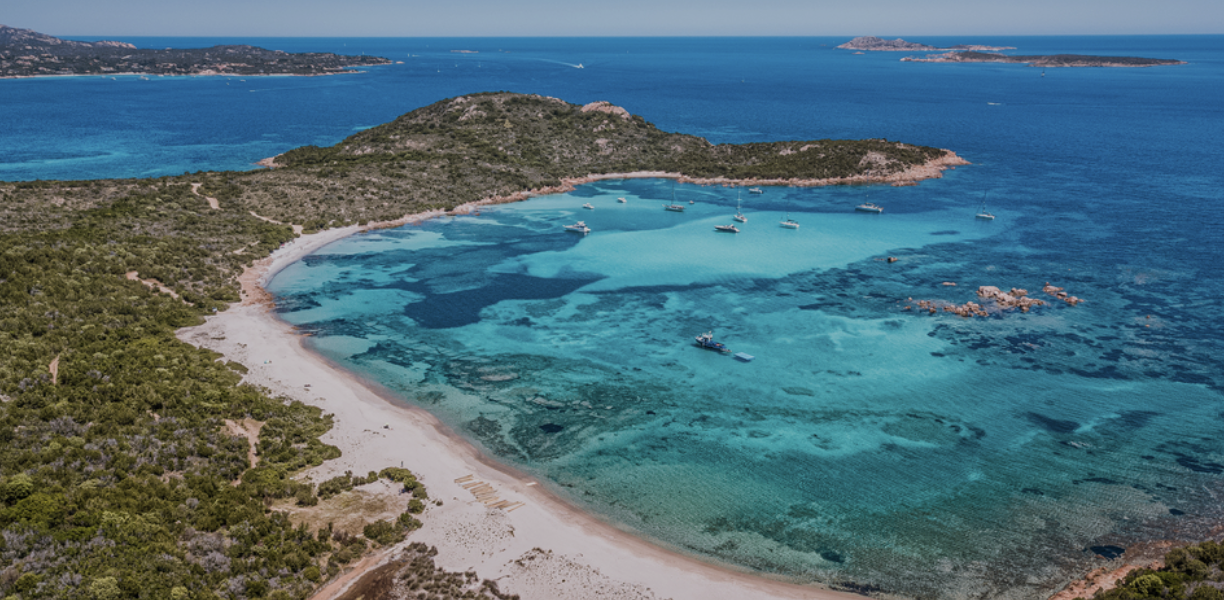
Pedra Ruja, one of the most beautiful stretches of the coast, owes its name to the reddish hues of the rocks and pebbles that characterize this portion of the coast.
It is a small arch-shaped beach of only 250m in length, not very crowded and chaotic, which is why it is particularly suitable for family relaxation.
Here we find the famous Nikki Beach, a place where you can taste delicious local specialties and great cocktails.
Liscia Ruja on the contrary, is the longest beach on the Costa Smeralda and certainly one of the most famous. It is spread over 500m of coastline, in a real natural paradise.
On the horizon rise the wonderful islands of Soffi and Mortorio and on the right it is possible to glimpse Capo Figari.
Beach organized for:
- Families
- People with disabilities
- Elderly
- Young people
- Underwater activities lovers
- Rental of umbrellas, deck chairs, pedal boats, kayak, and boats
Cala di Volpe
The exclusive resort of Cala di Volpe is built around the prestigious homonymous hotel, designed by the famous architect Jacques Couelle, a historic member of the Architecture Committee that gave life to the Costa Smeralda style.
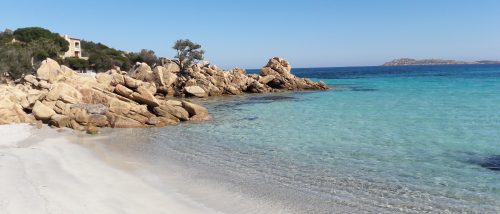
Cala di Volpe inlet is composed by 4 beaches: Petra Ruja, Liscia Ruja, Petra Niedda and Cala di Volpe beach.
The area rose to prominence in 1977, when it hosted the filming of one of the famous James Bond films.
Thus, it became one of the most chic and well-known areas of Italy in the world.
Cala di Volpe is synonymous with “Costa Smeralda style” with its architectural, natural and artistic elegance as well as a renowned stage for international high society.
The area is particularly prestigious in terms of real estate, mainly dotted with breath-taking villas overlooking the sea.
The area is characterized by its natural magnificence, with the colours, smells and vibrations that characterize Costa Smeralda.
The aperitif at sunset at the Cala di Volpe Cocktail Bar is highly recommended, open to the public even beyond hotel guests.
La Celvia

La Celvia is a beautiful, quiet, intimate and reserved location, much loved by VIPs and the jet set.
This beautiful beach, partly free and partly equipped, is quite extensive in length (about 300 meters), but rather narrow and surrounded by thick vegetation, which protects it perfectly from the north winds, especially from the famous Gallura Mistral.
The tongue of sand of which it is made up is coarse-grained with fragments of shells and quartz powders which give it shades from grey to reddish.
Arriving by car can be not so easy. The road is particularly narrow for being two-way and the parking lots are not very large. For this reason the beach is very private and almost exclusively frequented by those who come from the fantastic villas hidden behind the thick vegetation with paths immersed in the Mediterranean scrub that lead directly to the beach.
In terms of real estate, the area is characterized by classic Costa Smeralda style and private villas, especially thanks to the entrance gate that does not allow the public to access the residential area.
Beach organized for:
- Families
- People with disabilities
- Elderly
- Young people
- Underwater activities lovers
- Rental of umbrellas, deck chairs
Capriccioli
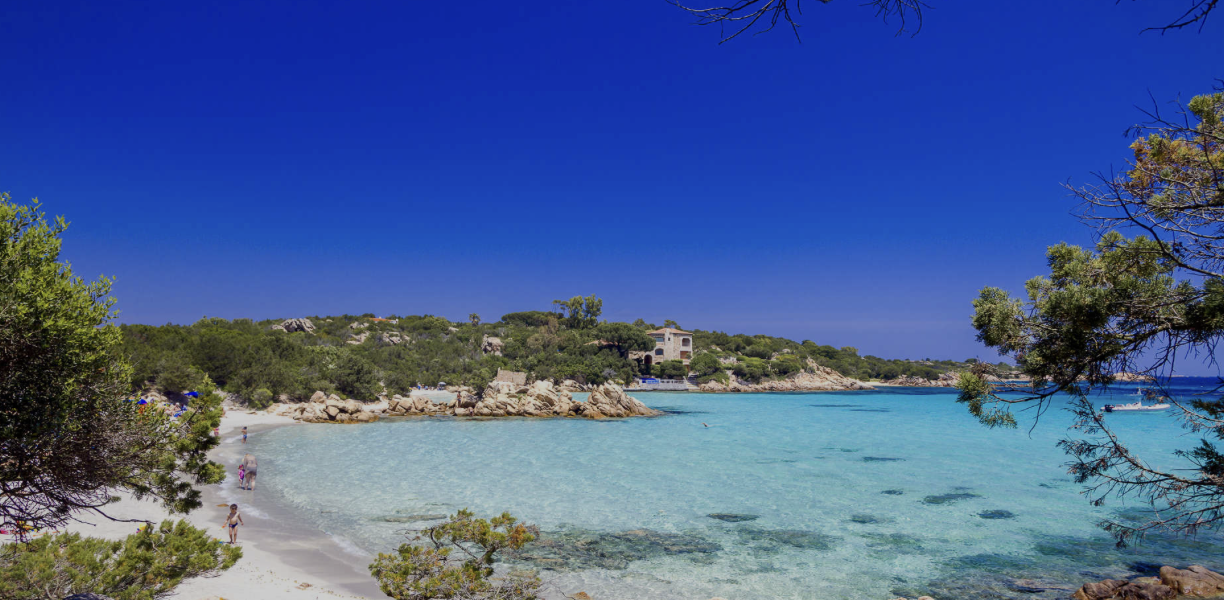
Capriccioli in Gallura means “little goats”, in honor of the granite rocks rounded by the sea and the wind that resemble a real flock emerging from the splendid emerald waters.
Cala Capriccioli is one of the most famous and loved bays of the Costa Smeralda.
The promontory of Cala Capriccioli is made up of four beaches (including La Celvia) divided by pink granite rocks that overlook the islands of Soffi, the islands of Camere, part of the Archipelago di la Maddalena and the famous island of Capriccioli, Mortorio, which contribute to create a unique background.
Despite being complete with all useful services, Capriccioli does not lose its wild charm where juniper, olive, mastic and maritime pine give off typically Mediterranean fragrances.
Beach organized for:
- Families
- People with disabilities
- Elderly
- Young people
- Underwater activities lovers
- Rental of umbrellas, deck chairs, pedal boats, kayak, and boats
Spiaggia del Principe
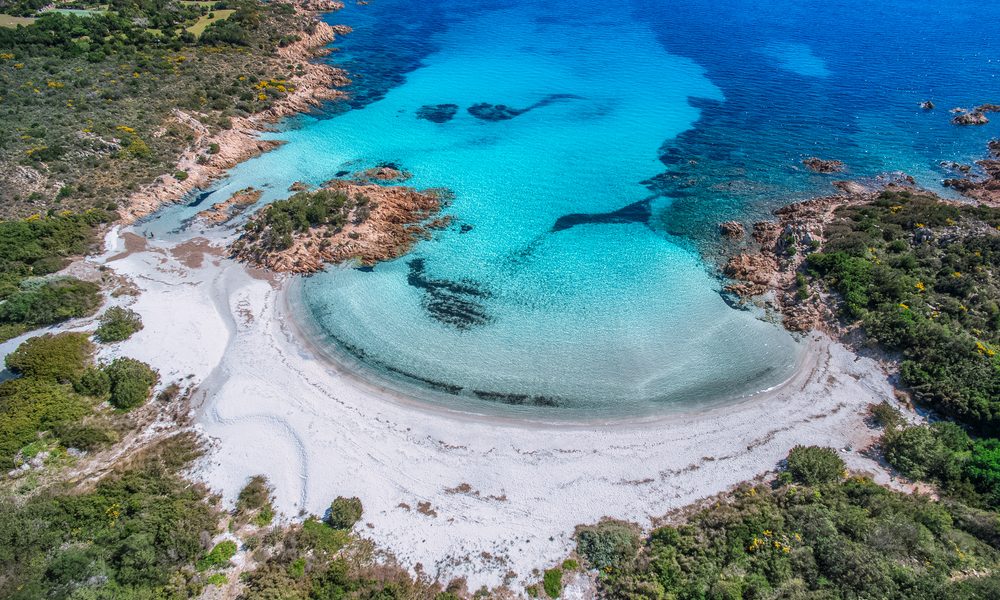
When Karim Aga Khan IV landed in Sardinia, creating here what we all know as Costa Smeralda, his favorite corner of the bay was the beach of Poltu di li Cogghj (“Port of the leathers”, ancient boarding place for the export of local production, especially leather), now known as “Spiaggia del Principe” (Prince’s beach) in his honour.
An expanse of sea of a thousand turquoise and emerald shades and fine white sand protected by the wild vegetation, through which the winding un paved path passes to get to the beach (therefore not suitable for people with disabilities), and from pink rocks.
The beach is entirely free, but it is still possible to rent umbrellas and sunbeds in the small establishment.
Beach organized for:
- Families
- Young people
- Underwater activities lovers
- Rental of umbrellas, deck chairs
Romazzino
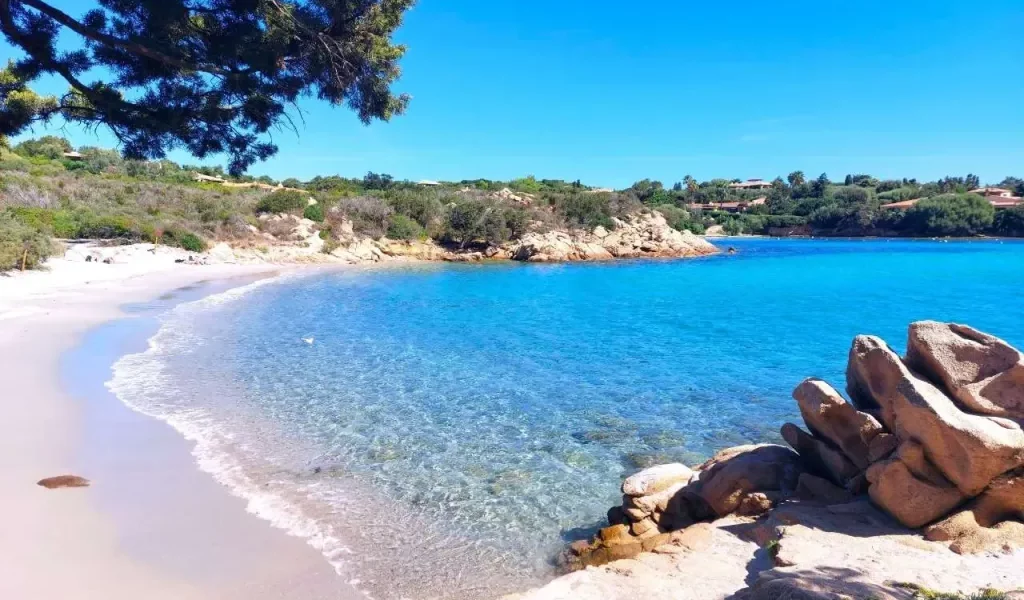
Romazzino is certainly one of the most prestigious areas of Costa Smeralda, both in terms of real estate, with fantastic pieds dans l’eau villas, and tourism.
Like much of the area, it is characterized by a wonderful stretch of coast with thick Mediterranean scrub and extraordinarily crystalline waters. But, unlike the other beaches in the area, the sand is not very fine-grained and the seabed is not very low.
Romazzino is known all over the world for its homonymous luxury hotel, built in the 1960s, thanks to which it became the theater of the international jet-set, recognized for its elegance and prestige. Now it is one of the best served areas of the coast and most sought after by international investors, especially for the renovation of historic villas from the 1960s-70s-1980s.
The origin of its name comes from an Italianization of the Gallura term “Rumassinu” (rosemary), which also appears as such in the first maps of the 19th century.
Two of the trekking paths (easy level) of the Pevero Health Trail start from Romazzino, from where you can admire the beauty of the whole promontory.
In 2020 the pedestrian artery of about 2km that connects Capriccioli to Romazzino was inaugurated, to encourage sport and green circulation, and designed by the well-known architect Giancarlo Busiri Vici who, together with his famous father, signed iconic emerald projects, such as the church of Stella Maris and the Romazzino hotel.
Beach organized for:
- Families
- People with disabilities
- Elderly
- Young people
- Underwater activities lovers
- Rental of umbrellas, deck chairs, pedal boats, kayak, and boats
Pevero
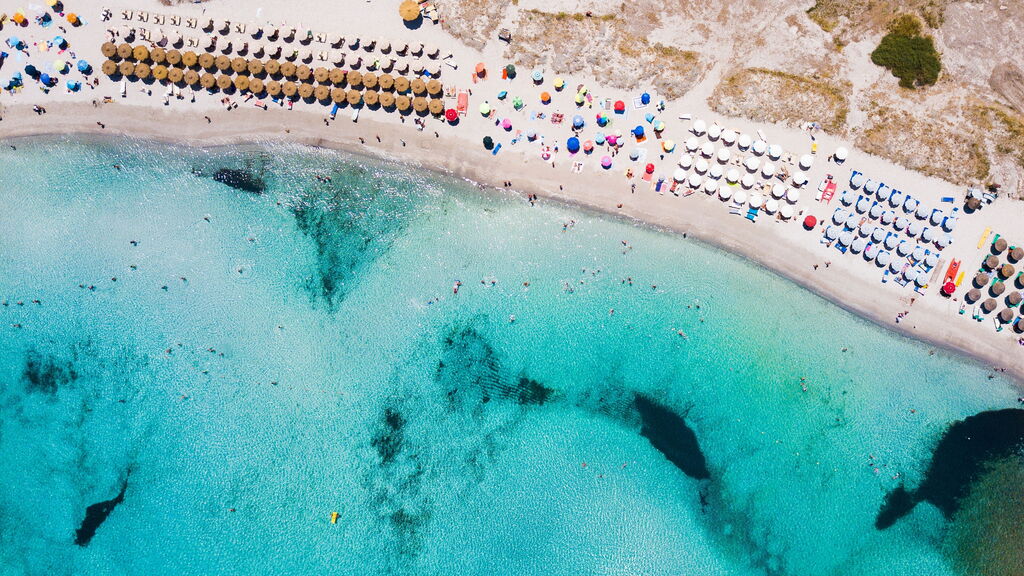
The Pevero presents itself like a gulf declined in different coves flanked by granite rocks shaped by time and the Mediterranean scrub, in front of a sea of a thousand shades with the islands of Mortorio and Soffi as a background.
The Pevero area is a paradise for VIPs and paparazzi just 2km from the emerald capital Porto Cervo. The main beach, Grande Pevero, is an expanse of pristine sand that forms a crescent lapped by the turquoise, blue and green reflections of the sea. Pevero is also home to one of the most famous and green golf courses in the world, the Pevero Golf Club, which makes the location a particularly popular destination for golf lovers. Separated by a promontory, the Piccolo Pevero stretches out, a beach less than half the size of its “big sister”, from where offshore you can admire the islets of Li Nibani, “the seagulls”.
Beach organized for:
- Families
- People with disabilities
- Elderly
- Young people
- Underwater activities lovers and golf
- Rental of umbrellas, deck chairs, pedal boats, kayak, and boats
Pantogia
Pantogia is a location a few minutes from Porto Cervo located on a hill overlooking the wonderful emerald gulf, delighting the lucky ones with incredible views at all hours of the day.
It benefits from large green spaces and privacy allowing relaxation and calm just a few kilometers away from the most renowned and glamorous centers of Porto Cervo.
The hill of Pantogia, also known as the Pevero hill for its fortunate position overlooking the Gulf of Pevero and the green fields, is characterized by the presence not only of villas, but also modern, reserved and functional apartments with sea view.
Porto Cervo
Symbol of Vita Smeralda and Sardinian capital of luxury, Porto Cervo, thanks to its unmistakable architecture perfectly integrated in an extraordinary and heavenly naturalistic context, is recognized all over the world as a point of reference and meeting point for the international jet set and luxury tourism.
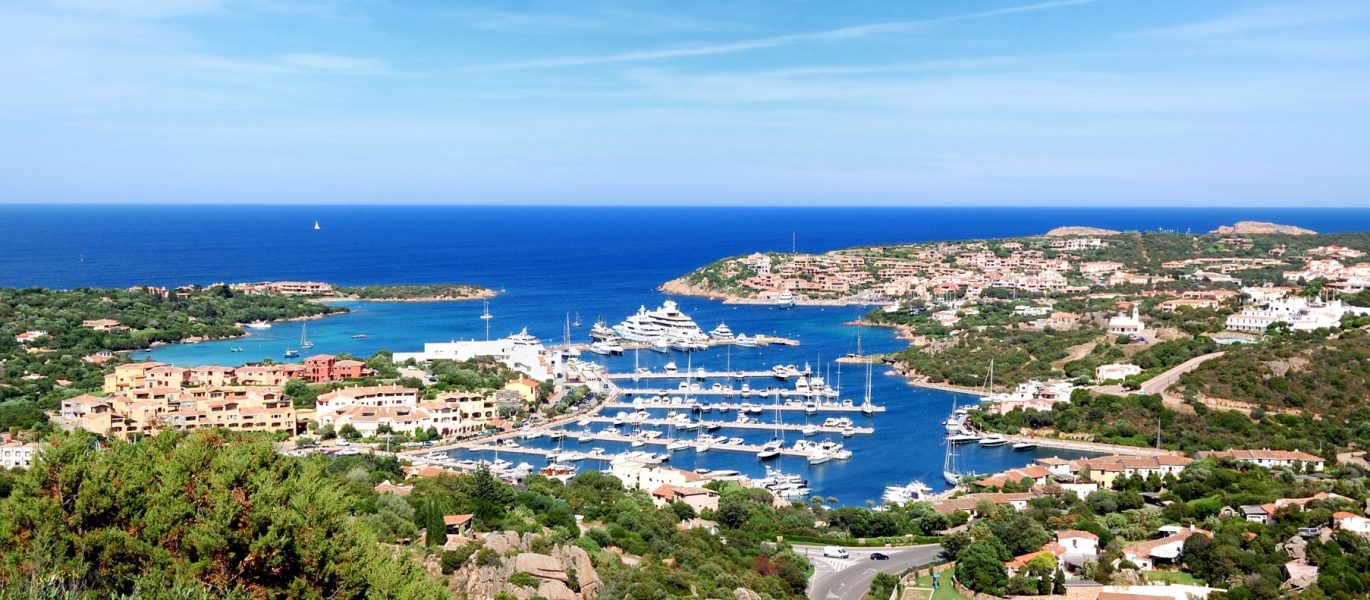
The delightful village was born in the sixties, around a natural inlet that took the shape of a deer (Cervo in Italian). From the Piazzetta delle Chiacchiere to the Sottopiazza there is a succession of alleys, windows, balconies, prestigious boutiques, all strictly in the typical Costa Smeralda style. All around, luxurious restaurants and hotels, glamorous clubs, but also splendid villas immersed in the Mediterranean scrub that climb the surrounding rocky hills.
The Costa Smeralda real estate market, as mentioned at the beginning, is particularly heterogeneous and diversified based on certain characteristics and the center of Porto Cervo is certainly one of the most prestigious areas.
Cala Granu
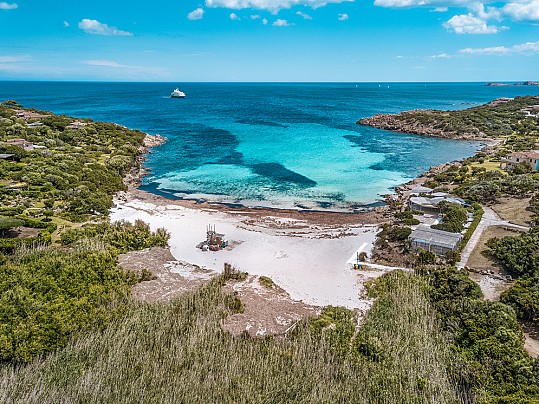
Cala Granu, is a bay with crystal clear water, fine white sand and well sheltered from the wind, just two kilometers away from the center of Porto Cervo. Cala Granu is a particularly romantic cove, highly recommended for families.
It is mainly characterized by the presence of villas and apartments with sea views.
Beach organized for:
- Families
- Young people
- Rental of umbrellas, deck chairs, pedal boats
Capo Ferro
Capo Ferro is the promontory above which the Costa Smeralda lighthouse rises, one of the most important in the Mediterranean and one of the few still physically controlled by a guardian. Its construction began in 1858 and still today its beam of light travels about 24 miles, from Punta Sardegna to Capo Figari.
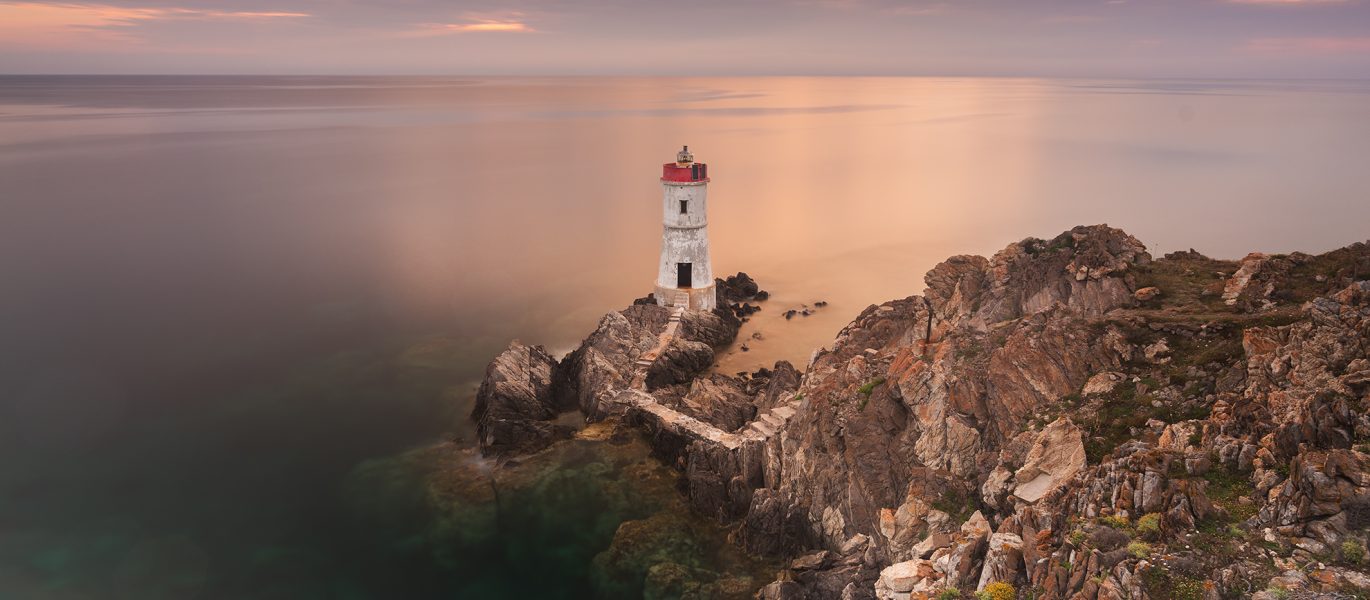
The area is extremely suggestive and very different from the rest of the coast, with high cliffs and dark, well-defined rocks, almost reminiscent of Nordic settings.
The lighthouse is located about 40m high and is spread over 12m high.
The Capo Ferro lighthouse is the only lighthouse still active (therefore not open to visitors as it is an area of military competence), but not the only one.
There are others that are no longer in use, but certainly no less impressive such as: the “Vecchio Faro”, the “Faro dell’isola delle Bisce”, opposite the Capo Ferro lighthouse, and the “Faro Rosso”.
It is the ideal area for suggestive and romantic walks, especially at dawn.
Cala del Faro
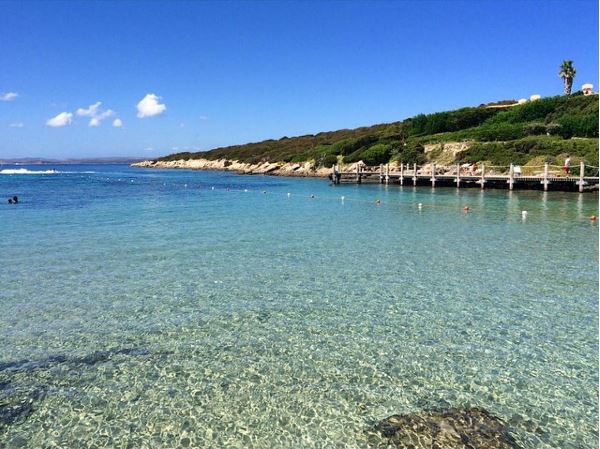
Cala del Faro is an area that falls geographically within the Costa Smeralda but is managed by a consortium of its own: the Consortium of Cala del Faro.
It is located about 10 minutes from Porto Cervo, in one of the northernmost areas of Sardinia.
The beach of Cala del Faro is very popular for the view that the nearby islands (Isola del Cappuccini and Caprera) offer and for the well-kept green lawn that goes down almost to the sea, giving a valid alternative to totally sandy beaches. Its location is perfect for windsurfing and snorkelling.
At the real estate level, it consists of a cluster of villas and apartments (about 180 properties in total) scattered between the Mediterranean scrub and green meadows. It is one of the few areas of the coast where it is possible to access the beach directly from the residential area with a short walk, with no car needed.
Beach organized for:
- Families
- People with disabilities
- Elderly
- Young people
- Underwater activities lovers and wind-surf
- Rental of umbrellas, deck chairs, pedal boats, kayak
Liscia di Vacca
In the full emerald fervour of the 1960s, a group of English aristocrats gave life to this delightful village that rises around the small church dedicated to the Madonna di Bonaria. Savin Couelle designed and gave life to this elegant village with clear references to materials and the tradition from Gallura.
Subsequently, around the 80s, the village was enlarged with the construction of the village “Bagaglino” which develops around the small and reserved beach, with a fashion show of boutiques, restaurants, a theater and a suggestive lake surrounded by a large Mediterranean garden , all strictly in local style but revisited in an almost baroque key.
The real estate proposal in the area is quite wide, offering both apartments and villas of different types, a few minutes from Porto Cervo but with beaches, sea and relaxation just a stone’s throw from home.
Beach organized for:
- Families
- People with disabilities
- Elderly
- Young people
- Rental of umbrellas, deck chairs, pedal boats
Poltu Quatu
Poltu Quatu, “Hidden Port” in Gallura, is one of the most exclusive locations on Costa Smeralda.
It takes its name from the privacy of the village, which is born at the end of a long fjord bordered by granite walls, which shelter the village from the winds, making it an ideal and exclusive landing place for sailors.
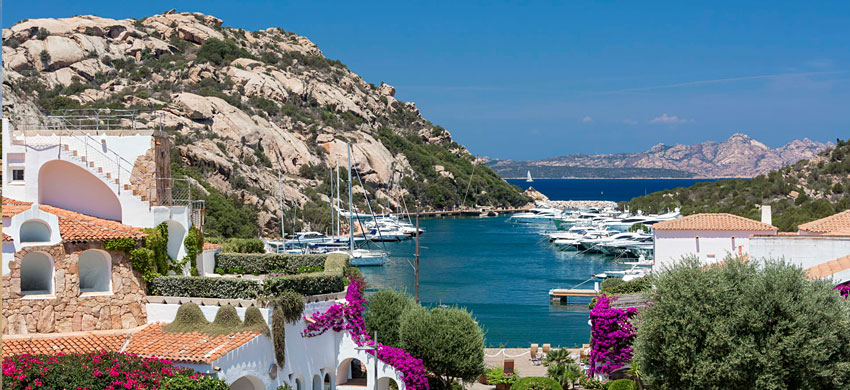
The predominant colour is white, and the shapes are sinuous and typically Mediterranean. The village does not include beaches, but at a short distance we find some of the most beautiful beaches on the coast.
The real estate market of Poltu Quatu is in a high and very prestigious range considering that it is one of the chicest areas of the coast.
We have thus arrived at the northern border of the Costa Smeralda, the last tip is to retrace it all with your own eyes, enjoying the tireless and eternal beauty and the energy that fits tight between these lines.
Enjoy the discovery.

 It
It  Fr
Fr 